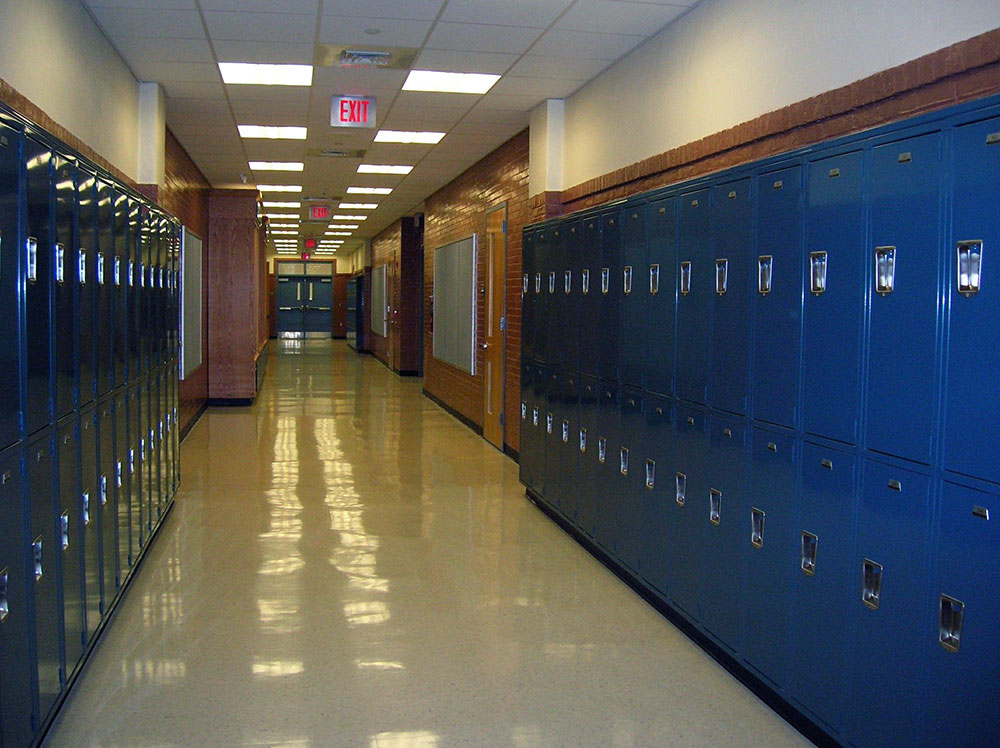The Cost of School Shootings
College attendance and employment rates are lower among high school students who were exposed to a shooting at school
Get all our news
You can see that this really sticks with students and affects their long-run trajectories, both in terms of their educational attainment and their economic outcomes.”
Molly Schnell
IPR economist

More than 240,000 U.S. students have experienced gun violence at school since the 1999 Columbine shooting, according to an analysis by the Washington Post. In a new working paper, IPR economists Molly Schnell and Hannes Schwandt, along with Maya Rossin-Slater at Stanford University and Marika Cabral and Bokyung Kim at the University of Texas at Austin, examine the cost of school shootings to the surviving students.
Beyond the terrible loss of life—with 147 students, educators, and others killed since 1999—the study is among the first to quantify the long-term impacts of school shootings on the numerous students who survived them. It finds that students do not just “bounce back” from shootings, and they are affected across the board—no matter their race, gender, or socioeconomic status.
“You can see that this really sticks with students and affects their long-run trajectories, both in terms of their educational attainment and their economic outcomes,” Schnell said.
In the short term, the researchers find students who experience a school shooting, when compared to their peers who do not, are more likely to miss school, be chronically absent, and repeat a grade two years after the event.
Longer term, these students are less likely to graduate high school as well as attend and graduate from college. Between the ages of 24 and 26, they were also less likely to be employed and earned less than others their age. The researchers calculated that this could amount to an estimated $115,500 in lost wages over the course of their lives.
The researchers used a unique Texas dataset that linked administrative data from primary schools, high schools, universities, and the labor market. They compared 33 K–12 public schools in Texas that experienced a school shooting between 1995 and 2016 to a similar Texas school that did not. Shootings fell into one of four categories: suicides, personally-targeted, crime-related, and others.
For long-term outcomes, they examined 18–26 year olds who attended one of eight Texas high schools in the sample between 1998 and 2006. Nearly half of the shootings resulted in at least one fatality.
In previously published research, Schnell, Schwandt, and Rossin-Slater discovered that exposure to a school shooting increased youth antidepressant use by over 20% two years after the shooting. Based on these results, they expected to see short-term impacts 2–3 years after an act of gun violence.
“The big question was always, ‘How does it affect what economists call children’s human capital formation?’” Schwandt said.
Human capital is defined as the knowledge and skills that people accumulate throughout their lives that allow them to be productive members of society. Schwandt notes that the findings provide “a sense of how students react to traumatic events of violence in school,” which could have implications for future research.
The researchers discovered few differences across gender or racial groups in terms of the short- or long-term impacts.
“It's not that it's concentrated among one group or another, which suggests that the costs of gun violence in schools are really quite universal,” Schnell explained.
The one exception is that Black students and students who received free or reduced-price school lunches experienced larger adverse effects on some outcomes. This could mean exposure to a shooting may exacerbate pre-existing disparities.
Though school shootings are not the main driver behind gun deaths in the United States, Schnell and Schwandt said policymakers and the public should find the study concerning because it reveals how damaging these events are to students who live through them. It can also be useful for comparing and informing different policies that address gun violence, Schnell points out.
She explained that when schools had more mental health professionals available, they saw no difference in students’ outcomes. This suggests that having more counselors on staff did not protect students from the negative consequences of the shootings.
Overall, the results show no school was able to implement effective programs to help students in the aftermath of a shooting. This is why, Schwandt argues, policies that aim to stop gun violence would be the most beneficial to students.
“You end up with very harmful events with long-term costs and damages that could have been prevented if these guns were not brought to school,” Schwandt said.
Molly Schnell is an assistant professor of economics and Hannes Schwandt is an assistant professor of human development and social policy. Both are IPR fellows.
Photo credit: Pixabay
Published: January 27, 2021.


